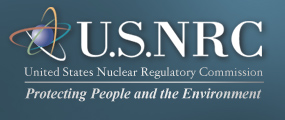Resolution of Generic Safety Issues: Item A-21: Main Steam Line Break Inside Containment - Evaluation of Environmental Conditions for Equipment Qualification (Rev. 1) ( NUREG-0933, Main Report with Supplements 1–35 )
DESCRIPTION
Safety-related equipment inside the containment of a nuclear power plant is qualified for the most severe accident conditions under which it is expected to function. In a PWR, this had been previously assumed to be the pressure and temperature that would accompany a LOCA resulting from the failure of the largest pipe in the reactor primary system. However, preliminary calculations indicated that the failure of a main steam line inside the containment could result in a temperature higher than that calculated for a LOCA and, therefore, possibly higher than the temperature for which the safety-related equipment was qualified.
This NUREG-03712 item addressed the evaluation of environmental conditions that would result from a main steam line break (MSLB) within the containment for the purpose of qualifying safety-related equipment. This evaluation would involve recommending acceptable methods for simulating and calculating the environmental conditions during component qualification testing.
PRIORITY DETERMINATION
Assumptions
It was assumed that the accident sequence of interest is initiated by an MSLB with the break size and location such that superheated conditions exist in some volume within containment. Then, some equipment within this volume fails, since these environmental conditions are somewhat more severe than the design basis conditions. This equipment failure then causes the MSLB accident to result in a core-melt accident.
Frequency Estimate
The frequency of an MSLB was estimated to be less than 10-3/RY.32 It was assumed that 20% of these breaks are of such size and location that they would produce conditions greater than design conditions in a significant volume within containment. Equipment was not expected to fail if temperatures were to rise slightly above the qualification temperatures. Since the temperatures under consideration are only on the order of 10°F hotter than the qualification temperature, the probability of equipment failure was estimated to be no more than 10%, even if the equipment were subjected to sustained temperatures of this magnitude. However, these temperatures are not sustained. Because of the relatively low heat transfer rate in superheated steam and the heat capacity of the affected equipment, the equipment itself is not expected to achieve a temperature greater than that for which it was qualified.186 This effect was conservatively bounded by assuming a probability no greater than 10% that the temperature of the equipment will surpass the qualification temperature.
Finally, it was assumed that there would be a 10% chance of equipment failure causing a core-melt accident. This assumption resulted in an upper limit core-melt frequency of 2 x 10-7 /RY.
Consequence Estimate
A core-melt can have a variety of consequences ranging from 2,000 man-rem to over 5 x 106 man-rem. Assuming the same distribution of consequences calculated in WASH-140016 and scaling this spectrum to 2 x 10-7 core-melt/RY, the resulting average risk was calculated to be 0.22 man-rem/RY. At the time of the initial evaluation of this issue in November 1983, there were 43 operating PWRs with 350 years of experience. Assuming a 40-year plant life and including 36 PWRs that were under construction, the total remaining operating life of 79 PWRs was 2,810 years. Thus, the total risk reduction for this issue was less than 618 man-rem.
Cost Estimate
Industry Cost: It was estimated that $100,000/plant of analytical work would be required to calculate temperatures throughout the containment for the entire MSLB spectrum. In addition, should equipment upgrade be necessary (which was earlier estimated to have a 10% probability), an additional $1M or more per plant would be required. Thus, the average licensee cost was estimated to be $200,000, or $15.2M for the 76 affected PWRs.
NRC Cost: It was estimated that 3 staff-months of generic work and 1 staff-week for each of the 43 operating PWRs would be required to address the possible solution. (No extra review costs were involved in forward-fits.) Thus, the total NRC cost was estimated to be about $100,000.
Total Cost: The total industry and NRC cost associated with the possible solution was estimated to be $(15.2 + 0.1)M or $15.3M.
Value/Impact Assessment
Based on an estimated public risk reduction of 618 man-rem and a cost of $15.3M for a possible solution, the value/impact score was given by:

CONCLUSION
This issue was given a low priority ranking (see Appendix C) in November 1983. In NUREG/CR-5382,1563 it was concluded that consideration of a 20-year license renewal period did not change the priority of the issue. Further prioritization, using the conversion factor of $2,000/man-rem approved1689 by the Commission in September 1995, resulted in an impact/value ratio (R) of $25,000/man-rem, which placed the issue in the DROP category.
REFERENCES
|


